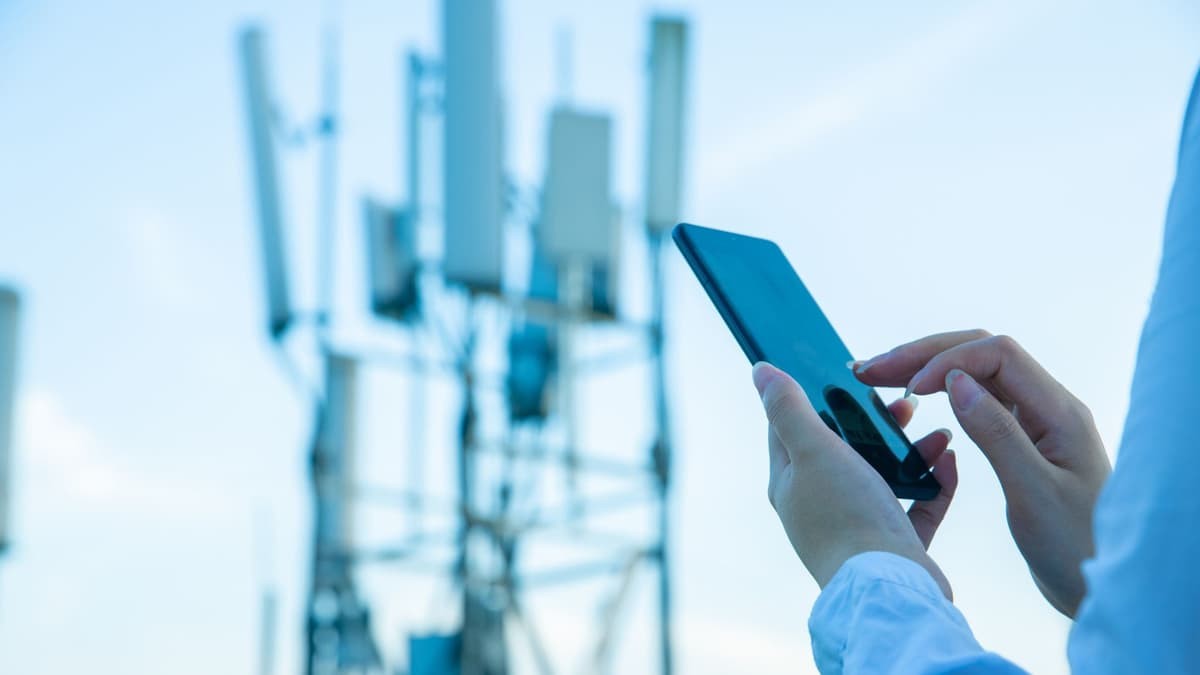Human Skin Cells Subjected to High-Intensity 5G Waves: Study Results Revealed
In a new study, researchers investigated the effects of high-frequency 5G electromagnetic fields on two types of human skin cells: fibroblasts and keratinocytes.
The cells were exposed to electromagnetic fields (EMFs) with frequencies of 27 GHz and 40.5 GHz—well into the 5G range—at intensities up to ten times higher than established safety limits, for either 2 or 48 hours. The goal was to determine whether such exposure would lead to measurable biological changes.

Figure 1. Mobile Phone Being Used Near A 4G, 5G Communications Tower.
To assess potential impacts, the scientists focused on two crucial cellular processes:
- Gene expression, which reveals which genes are active and at what levels.
- DNA methylation, a type of chemical modification that regulates gene activity.
The experiment was carefully controlled, using strict temperature regulation and blind testing to ensure accuracy. Figure 1 shows Mobile phone being used near a 4G, 5G communications tower.
Key Findings: No Significant Impact
The researchers observed only minor changes in gene expression and methylation patterns—and these were so small, they were deemed statistically insignificant.
“Differences in gene expression and methylation due to exposure were small and not higher than expected by chance. These data strongly support the assessment that there is no evidence for exposure-induced damage to human skin cells,” the authors wrote.
This study marks a significant milestone as the first to use advanced tools—like whole-genome RNA sequencing and DNA methylation arrays—to examine how 5G frequencies affect human genes and their regulation.
Debunking 5G Myths with Science
Mobile phones rely on electromagnetic waves within specific frequency bands to connect to Wi-Fi and cellular networks. As data demand grows, these lower-frequency bands can become crowded, slowing connections [1]. To combat this, 5G technology expands into higher frequency ranges.
Current 5G systems generally operate below 6 GHz, but future deployments are expected to utilize bands between 24 and 43 GHz. This raised public concerns about potential health effects—especially as higher-frequency waves behave differently.
As the study points out, lower frequencies (under 3 GHz) can penetrate up to 10 millimeters into human tissue. In contrast, 5G’s higher frequencies (around 10 GHz and above) penetrate far less deeply, often only a millimeter or less, meaning they barely go past the outer layers of the skin.
Clearing the Air on 5G Conspiracies
Since the introduction of cell towers and wireless technology, there have been persistent conspiracy theories linking EMF exposure to health issues—despite a lack of scientific evidence.
The rollout of 5G in 2019 unfortunately coincided with the COVID-19 pandemic, fueling even more false claims. Some conspiracy theories baselessly suggested 5G could cause infections, damage DNA, or even melt human tissue.
This study provides strong scientific evidence that high-frequency 5G exposure does not harm human skin cells, and the researchers hope it will help put public fears to rest.
Backed by rigorous methodology and cutting-edge tools, their work underscores the conclusion: 5G radiation, even at elevated levels, poses no detectable risk to skin cell health.
Reference:
- https://interestingengineering.com/science/skin-cells-zapped-with-5g-waves-study
Cite this article:
Keerthana S (2025), Human Skin Cells Subjected to High-Intensity 5G Waves: Study Results Revealed, AnaTechMaz, pp.1144.

